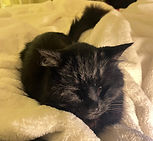
11. Synaptogenesis
Free content. Always.
Once axons find their targets based on guidance cues, they need to form synapses with their targets, whether it's another neuron or a muscle fiber, to communicate with that target through specific chemicals.
Here, we will take a look at how a motor neuron synapses with muscle fibers. This motor neuron-muscle fiber synapse is probably the most well-characterized synapse in the nervous system, in part because muscle cells are so large and easy to visualize.
Let's start on the muscle fiber side. Muscle fibers, which make up muscles, are not exactly smooth; they have ridges and bumps
along the surface. These ridges and bumps are called junctional folds. On the membrane of junctional folds you'll find Acetylcholine receptors (AChRs), which are transmembrane "channels" that allow the neurotransmitter Acetylcholine (ACh) to enter the muscle, thereby activating it. You'll also find an extracellular "goo" called basal lamina around the junctional folds:

However, unlike the picture, the AChRs are actually scattered out over the surface of the muscle fiber. However, once the motor neuron axon comes into contact with the muscle fiber, the AChRs on the muscle fiber will cluster around the the axon:

Hence, AChR clustering is contact dependent. But why does contact lead to clustering? Turns out, the basal lamina contains proteins that induce AChR clustering. In particular, the basal lamina contains laminin, agrin, and collagen, all of which are essential for receptor clustering at the point of the synapse. Without the basal lamina, contact-based AChR clustering does not happen, and neuromuscular synapses cannot form.
The principle behind neuron-neuron synapses is relatively similar, in which the chemical environment on the postsynaptic cell (the receiving cell) and in the neuronal junction creates opportune receptor clustering. However, the essential junction proteins are different. You do not need to memorize them, but they include Neuroligin, EphR, and Erb1.
Your Instructor
Cocoa (Cookie)

Cookie the science cat.